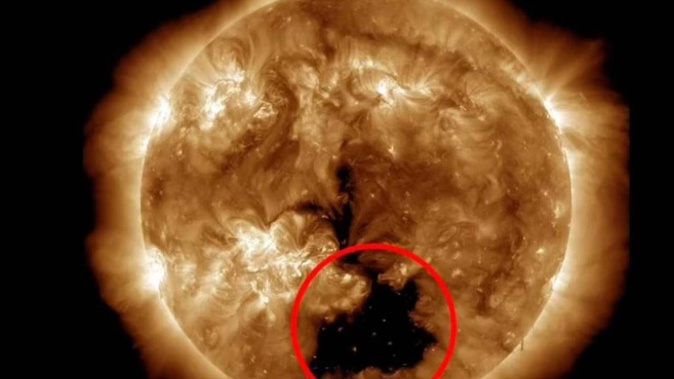
The sun has developed a massive “hole” 20 times larger than Earth, the second in a week.
The coronal hole is unleashing solar winds of 2.9 million km/h towards the Earth, which will hit our planet on Friday.
Scientists are carefully monitoring the situation to assess if the winds will affect our planet’s magnetic field and satellites - with the potential for knock-on effects on the internet, mobile phone networks and GPS.
Coronal holes are usually harmless, experts say, and are usually found near the sun’s poles.
They are cooler, less dense areas of the star and appear during the less active stage of the sun’s 11-year cycle.
“Coronal holes are magnetically open areas that are one source of the high-speed solar wind,” Nasa says.
“They appear dark when viewed in many wavelengths of extreme ultraviolet light, such as seen here. At times, the solar wind can generate aurora at higher latitudes on Earth.”
Nasa’s Solar Dynamics Observatory captured both holes. The first appeared on March 23.
That coronal hole produced auroras far further south than usual, with the skies over Arizona turning an electric purple and green.
Coronal holes are ranked from G1 to G5, with G1 being the least powerful. The first hole was ranked as a G3.
The second hole is not expected to produce as strong a solar storm as the first, so it’s unlikely that as many auroras will appear.
However, it is more noteworthy to scientists as it has appeared near the sun’s equator.
Daniel Verscharen an associate professor of space and climate physics at University College London, said the location of the hole was “very interesting”.
“I would expect some fast wind from that coronal hole to come to Earth around Friday night into Saturday morning of this week,” he told Business Insider.
Take your Radio, Podcasts and Music with you









